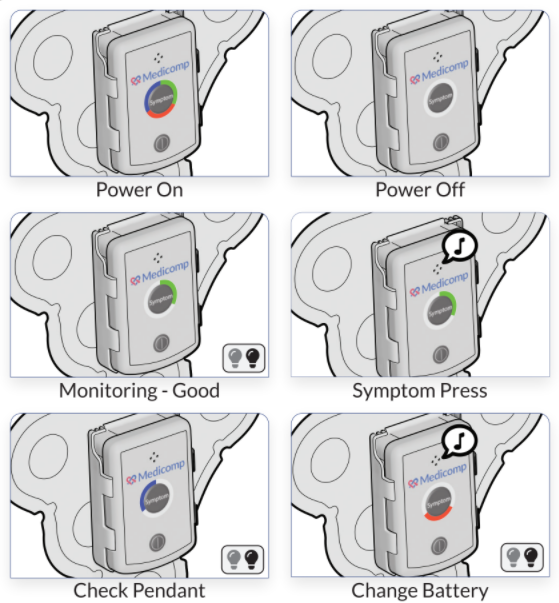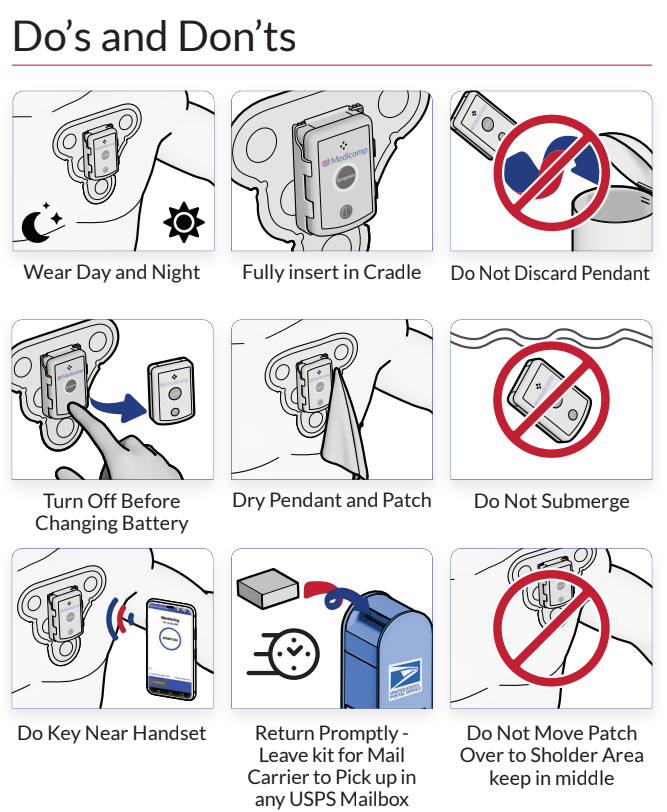According to the American Heart Association, the average person has a heart that beats 100,000 times per day. Should you discover that your heart beats faster or slower than this, or at an irregular pace, you may have an arrhythmia. Many different types of arrhythmias exist, and they can be harmless to serious and life-threatening. If caught early, many arrhythmias are treatable. Only your cardiologist can diagnose and treat you, but first, your doctor must find out if you have an arrhythmia and what type it is.
ReactDx provides innovative Holter, Event, and Mobile Cardiac Telemetry (MCT) monitors – known as ambulatory cardiac monitors – that can detect arrhythmias. Below you’ll find a summary of what to expect when your physician prescribes to you a Holter, Event, or MCT test.
- Length of Time
The three types of ambulatory cardiac monitors are worn for different lengths of time. A Holter monitor is usually prescribed for 24-48 hours. Patients that have frequent symptoms are best suited for this type of monitor. Individuals who are asymptomatic or experience symptoms a little less often would do well with an Event or MCT monitor, which is worn for a period of up to 30 days. Physicians may prescribe the longer Event or MCT test when he or she wants more sophisticated data and patient reports than a simple Holter can’t provide. MCT tests are the most comprehensive procedures, providing your doctor with the most clinical information and advanced patient reports.
- Application
Placing the monitor on your person is relatively easy and takes just a few minutes of your time. Either you will be set up in your doctor’s office or you may be mailed a monitoring kit, and you will set up yourself at home. The first important step is to prepare the skin on your chest to get it ready for the electrodes, which are then attached to your skin using a glue-like gel. The electrodes may have wires that connect to an ECG recorder pendant, which is usually about the size of a deck of cards or smaller. You may be able to clip the pendant to your pants, wear it around your neck, or place it in your shirt pocket. (Some newer patch-style monitors do not have wires.) Once you are hooked up, it is essential to keep the electrodes attached to your chest and keep the monitor powered on for the entire length of your prescribed test.
- How It Works
The recorder pendant captures the electrical activity of your heart (ECG). For Holter monitors, you bring the monitor back to your doctor at the end of your testing period, and then he or she downloads the data for analysis. Event and MCT procedures are more sophisticated tests, and usually, some sort of data analyzer and transmitter, such as a customized smartphone, is included. At regular intervals during your procedure, the analyzer/transmitter device takes the raw ECG data from the recorder pendant via Bluetooth or similar technology, makes an initial analysis using sophisticated algorithms, and then transmits the data over the cellular network to a cardiac monitoring lab for final analysis. The lab creates various reports for your doctor during and after your Event or MCT testing period.
- Daily Activities
It is important that users go about their regular everyday activities while wearing the monitor. Whenever you feel a symptom, you will instruct the monitor to make an ECG recording by pressing a button. Patients are strongly encouraged to keep a diary, in which you log your symptoms. Patients should wear the electrodes and have the monitor powered on 24 hours a day, even while sleeping, as most monitors have automatic recording capability and will make recordings on its own when it detects an abnormality even when you do not feel a symptom. Users will change the electrodes periodically. Users must also change or charge the batteries of the devices regularly to keep the monitors powered. Some monitors or parts of monitors must not get wet and must be removed while bathing. Follow your monitor’s instructions.
- Additional Information
Ambulatory cardiac monitors are NOT real-time lifesaving devices. They are designed to make ECG recordings to be evaluated at a later time. Always call 9-1-1 if you experience an emergency, and keep your monitor on because it may be helpful to the emergency medical staff. The information provided here is not enough information for a successful test. Be sure to read and follow the documentation that comes with your monitor or on the monitor provider’s website, such as ReactDx’s Patient Center.
Being prepared on what to expect for your Holter, Event, or MCT procedure is a good way to take an active role in your heart health. Call ReactDx at 800-234-3278 and ask about our Holter, Event, and Mobile Cardiac Telemetry (MCT) monitoring services. We also have a Heart Health News page that contains helpful information that will encourage you on your path to wellness.



